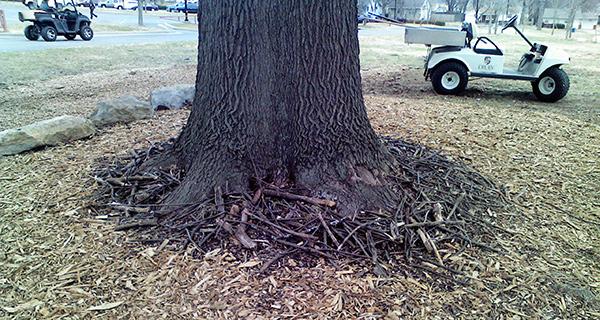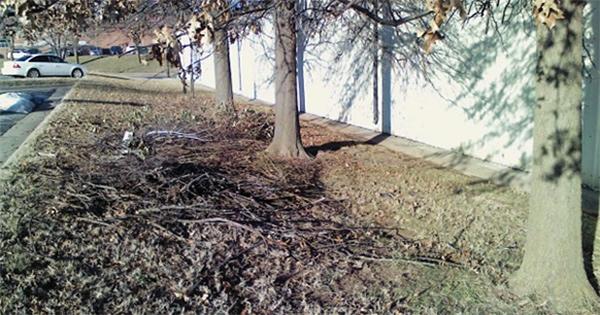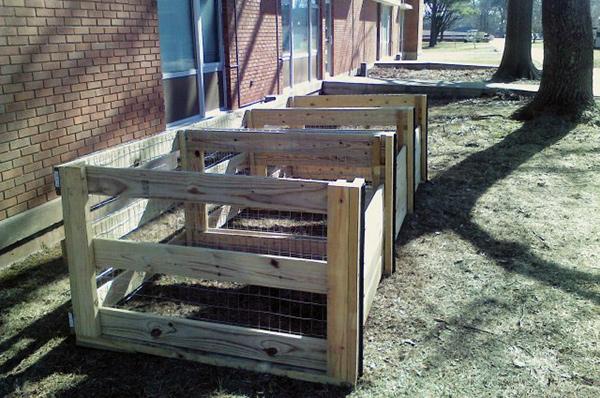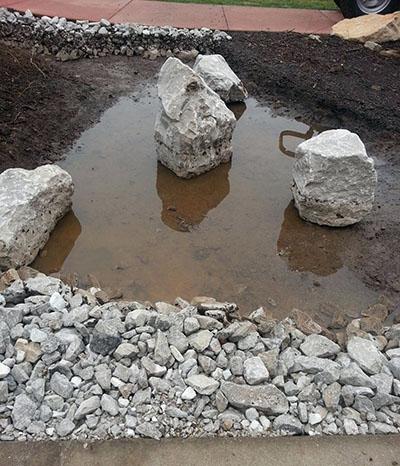Sustainability Baby Steps...
Sustainability continues to be a hot topic in the Green Industry and here at Drury University. Every aspect of how we manage and maintain our landscapes is affected. I read about amazing things happening all the time and wonder what I can do? How can I share in all these amazing steps taking place on college campuses, golf courses, parks, businesses, etc.? I sometimes feel I am getting left behind. But sustainability is not only about liquid propane mowers, compost tea, and native plants. As I study the sustainability efforts around me, I begin to see that there is an aspect of sustainability that can easily do more and doesn't get a lot of attention. Sustainability needs to influence every decision, not just some decisions. Not everyone incorporates sustainability consistently, yet small steps add up.
It Takes a Lot to Turn the Titanic
If you follow sustainable landscaping at almost any level, you know about the innovations and beautiful landscapes that have been designed and installed all over the world. One of my criticisms is that these efforts frequently require a significant alteration to what is in the landscape right now. While the sustainability impact of these new designs may be sizable, the resources needed to install them are often sizable as well. I suggest that rather than making a 180o turn, reworking or recreating projects, we rather simply make a turn in a new direction from exactly where we are. A direction that immediately begins paying sustainability dividends without a significant alteration of effort, maintenance practices, or perhaps most importantly, increased expenditure. Providing a low entry point to sustainability will increase the range of it, and overcome much resistance by those who oppose (misunderstand) it.
Play Small Ball
I suggest operations start with the small measures that are easily attainable. On Drury campus we have raised our mowing heights and slowed our mowing cycle. By doing this we increase the amount of campus leaf mass and have eliminated two complete mowing cycles. This decreases resource consumption and increases ecological benefits. Importantly, these steps have not promoted any blowback. We also have a lot of sticks on campus due to the density of our campus trees. These are routinely chopped when mowing, but many require collection. They then are added to our organic waste stream to either be chipped, or taken to a mulch facility off campus. We now have identified several areas where sticks can be deposited in central areas. These collected sticks act as mulch, and add a novel texture/dimension to an area. While we don't do this in high maintenance areas, we have again experienced no resistance from the campus community. Stick mulch can be used in small areas as a ring, or as large areas as a precursor to bed installation.

Using collected sticks as a tree ring.

Early stages of using sticks as mulch.
Compost Bins
The use of compost bins is nothing new. But here at Drury we have begun placing them at strategic points, in plain community view. This placement benefits us by providing central dumping locations for small amounts of organic waste. By discarding, then reusing the waste, we are dramatizing to campus that sustainable steps are achievable. More importantly perhaps is the awareness that these bins generate. The campus community sees the steps Drury Grounds is taking and understand that sustainability is not a secondary effort. Until sustainability takes a prominent position in the grounds management, we will always be behind the curve.

Compost bins are showing up on main campus.
Rain ponds
There are several areas on campus that pose a problem in terms of drainage and repetitive damage from storm water runoff. In order to manage this water, we adhere to the Slow/Spread/Soak approach. We identify where the water wants to run, which is pretty easy to determine due to erosion. We then will excavate out a wide area and several depressions in this runway. Boulders and rip-rap armor the stream and also provide interest in dry periods. Native plantings are also incorporated to create a natural look, plus additional stabilization of soil. The depressions will easily handle small amounts of water (most rainfalls are smaller amounts) and allow for infiltration. Larger amounts are allowed to pass over and through the system without causing damage. The advantage of these projects is they are easily constructed primarily with hand tools and inexpensive materials.

Rain pond works even while under construction
It Works When You Work It
This list is not a prescription for what every site should be doing to pursue sustainability. It is more about tailoring what you need, and understanding what the landscape has to offer, then doing it. Another great benefit of starting small is that it promotes awareness in your organization of your sustainable efforts. This can make it easier for you to sell larger scale efforts. Small exposures will ease naysayers to your side. These steps may not be what we continue. My point is they are sustainable steps, nonetheless.



0 Comments
Recommended Comments
There are no comments to display.